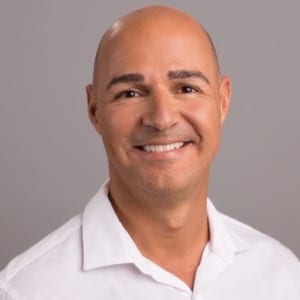Episode 154: What Are The Different Types of Scoliosis?
Table of Contents
Podcast Show Notes: Scoliosis Treatment with Dr. Tony Nalda
Episode Title: What Are the Different Types of Scoliosis?
Episode Summary:
Not all scoliosis is the same. While a diagnosis of “scoliosis” can sound straightforward, the type, cause, location, and severity of the curve make a huge difference in how it should be treated. In this episode of Scoliosis Treatment with Dr. Tony Nalda, we break down the different types of scoliosis, what causes them, and how these distinctions impact treatment decisions.
If you or a loved one has been told, "You have scoliosis," this episode is essential for understanding what that truly means—and why personalized care is key to long-term success.
Key Topics Covered:
✅ How Scoliosis Is Diagnosed:
-
Defined as a sideways spinal curve of 10° or more, with rotation
-
Measured using a Cobb angle on spinal X-rays
-
Severity Categories:
-
Mild: 10–25°
-
Moderate: 25–40°
-
Severe: 40°+
-
Very Severe: 80°+
-
✅ Types of Scoliosis Based on Cause:
-
Idiopathic Scoliosis (80% of cases):
-
No clear cause; most common form
-
Adolescent Idiopathic Scoliosis (AIS) is the most typical subtype
-
-
Neuromuscular Scoliosis:
-
Secondary to conditions like cerebral palsy, muscular dystrophy, or tethered cord
-
Often linked to poor muscle tone or connective tissue dysfunction
-
-
Congenital Scoliosis:
-
Caused by malformations during fetal development, such as hemivertebrae
-
-
Degenerative (De Novo) Scoliosis:
-
Develops later in life due to asymmetrical spinal degeneration, often from old injuries or unresolved misalignments
-
-
Traumatic Scoliosis:
-
Caused by a severe injury, such as a fall or accident
-
✅ Types of Scoliosis Based on Curve Location:
-
Cervical (Neck)
-
Thoracic (Mid-Back)
-
Lumbar (Lower Back)
-
Thoracolumbar (Transitional Area)
-
Multi-curve presentations such as double major or cervicothoracic scoliosis
✅ Why Curve Type and Cause Matter in Treatment:
-
Treatment plans must consider:
-
Causation (neuromuscular, congenital, idiopathic, etc.)
-
Curve location
-
Severity at diagnosis
-
Age and growth stage
-
-
These factors help determine whether a patient would benefit most from:
-
Chiropractic-based conservative treatment
-
Bracing
-
Specialized exercises
-
Therapy tailored to their unique curve pattern
-
Key Takeaways:
➡️ Saying "you have scoliosis" is too vague—type, cause, and location all affect treatment strategy.
➡️ Idiopathic scoliosis is the most common, but other types like neuromuscular or degenerative require very different approaches.
➡️ Every scoliosis curve has the potential to progress—that’s why addressing the structural problem early is essential.
➡️ At Scoliosis Reduction Center, treatment plans are built around each patient's specific curve and contributing factors.
Resources & Links:
📘 Free Guide: How to Effectively Treat Scoliosis – Get the latest insights on non-surgical scoliosis treatment. Download it at scoliosisreductioncenter.com/free
🌐 Learn More – Explore tailored treatment options for every type of scoliosis at scoliosisreductioncenter.com
📩 Have Questions? – Let us know what you'd like to learn about next in the comments section.
Subscribe & Stay Connected:
🔔 Subscribe and click the bell icon to get notified when we release new episodes.
Thank you for tuning in to Scoliosis Treatment with Dr. Tony Nalda—bringing clarity, education, and customized care to every scoliosis journey. 🎧
Podcast: Play in new window | Download
Subscribe: RSS
Dr. Tony Nalda
DOCTOR OF CHIROPRACTIC
After receiving an undergraduate degree in psychology and his Doctorate of Chiropractic from Life University, Dr. Nalda settled in Celebration, Florida and proceeded to build one of Central Florida’s most successful chiropractic clinics.
His experience with patients suffering from scoliosis, and the confusion and frustration they faced, led him to seek a specialty in scoliosis care. In 2006 he completed his Intensive Care Certification from CLEAR Institute, a leading scoliosis educational and certification center.
About Dr. Tony Nalda
 Ready to explore scoliosis treatment? Contact Us Now
Ready to explore scoliosis treatment? Contact Us Now








